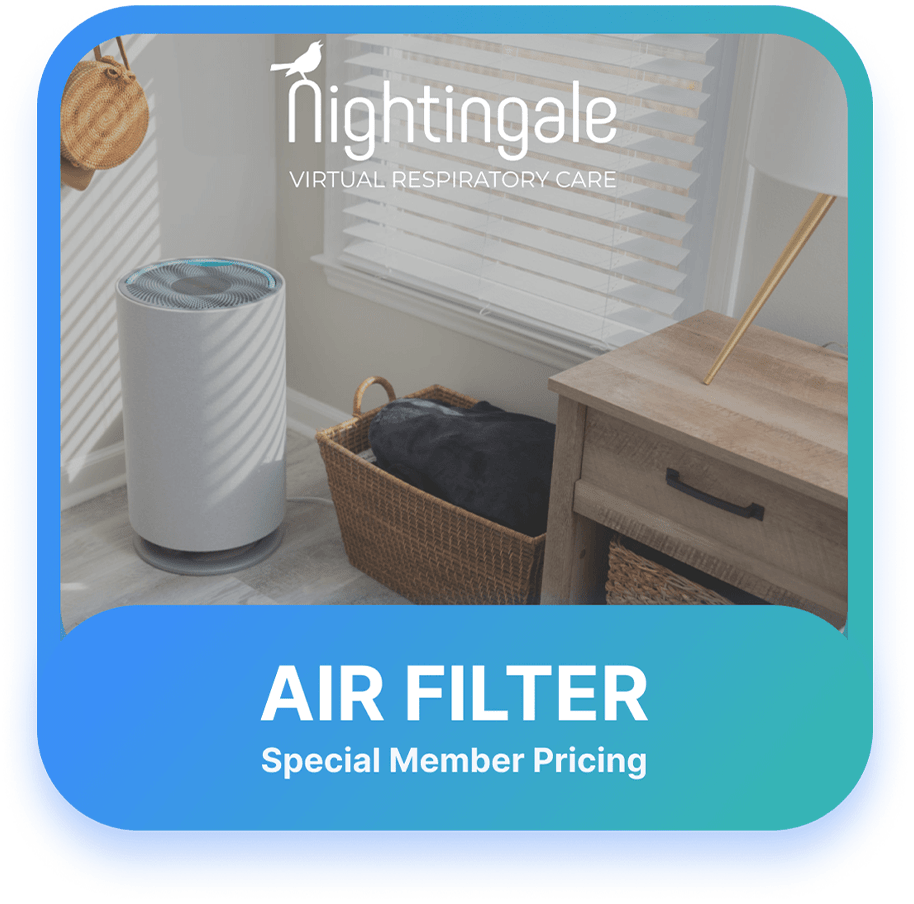
A Guide to Air Purifiers for COPD and Asthma
Chronic obstructive pulmonary disease (COPD) and asthma are respiratory conditions that can significantly impact the quality of life for those affected. Both conditions can be exacerbated by exposure to airborne irritants and allergens. Here we will discuss the benefits of using air purifiers for COPD and asthma, explore the top air purifiers on the market, and examine additional methods for managing these conditions, including respiratory therapy and the ADAMM wearable device.
Why Use an Air Purifier for COPD and Asthma?
Air purifiers can help remove airborne irritants and allergens that can trigger symptoms in individuals with COPD and asthma. By filtering out particles such as dust, pollen, pet dander, and tobacco smoke, air purifiers can help create a cleaner and healthier environment for those suffering from these respiratory conditions. Improved indoor air quality can lead to fewer flare-ups, reduced reliance on medications, and an overall better quality of life.
Top Air Purifiers for COPD and Asthma
- Oransi mod HEPA Air Purifier: This high-performance air purifier uses a medical-grade HEPA filter and an activated carbon filter to capture particles and odors effectively. Its compact design and quiet operation make it an excellent choice for individuals with COPD and asthma looking to improve their indoor air quality.
- IQAir HealthPro Plus: With its advanced HyperHEPA filtration system, this air purifier effectively removes ultrafine particles and a wide range of allergens, making it an excellent choice for individuals with COPD and asthma.
- Blueair Classic 405: Combining HEPA Silent technology with an activated carbon filter, the Blueair Classic 405 effectively removes airborne particles and odors, providing relief for those with respiratory issues.
- Alen BreatheSmart 45i: This air purifier features a customizable HEPA filter that targets specific allergens and pollutants, and its WhisperMax technology ensures quiet operation.
- Rabbit Air MinusA2: With a 6-stage filtration system, including a HEPA filter and an activated carbon filter, this air purifier efficiently removes airborne irritants and allergens, making it suitable for those with COPD and asthma.
Besides Air Purifiers, How Does Respiratory Therapy Help?
Respiratory therapy is a specialized form of healthcare that focuses on treating individuals with lung and breathing disorders. For those with COPD and asthma, respiratory therapy can help by:
- Teaching breathing exercises and techniques to improve lung function and reduce symptoms.
- Providing education on medication management, including the proper use of inhalers and nebulizers.
- Developing a personalized care plan that includes exercise, nutrition, and lifestyle modifications to improve overall respiratory health.
What is the ADAMM Wearable Lung Monitor?
The ADAMM (Automated Device for Asthma Monitoring and Management) wearable device is a cutting-edge technology designed to help individuals with asthma better manage their condition. This innovative device continuously monitors respiratory health by tracking breathing patterns, heart rate, and physical activity. The collected data is then analyzed to identify potential asthma triggers, allowing users to make informed decisions about their environment and treatment plan. By providing real-time feedback and alerts, the ADAMM wearable device empowers individuals with asthma to take control of their condition and improve their quality of life.
Most Nightingale Digital Health plans come with a wearable smart device called ADAMM, that tracks your breathing, symptoms, and triggers. The data collected by ADAMM is securely stored in your app and can be used by our respiratory therapists to them understand your condition and track your progress.
References
Kanchongkittiphon, W., Mendell, M. J., Gaffin, J. M., Wang, G., & Phipatanakul, W. (2015). Indoor environmental exposures and exacerbation of asthma: an update to the 2000 review by the Institute of Medicine. Environmental Health Perspectives, 123(1), 6-20. https://doi.org/10.1289/ehp.1307922
Sublett, J. L. (2011). Effectiveness of air filters and air cleaners in allergic respiratory diseases: a review of the recent literature. Current Allergy and Asthma Reports, 11(5), 395-402. https://doi.org/10.1007/s11882-011-0208-5
Chen, R., Zhao, A., Chen, H., Zhao, Z., Cai, J., Wang, C., Yang, C., Li, H., Xu, X., Ha, S., & Li, T. (2015). Cardiopulmonary benefits of reducing indoor particles of outdoor origin: a randomized, double-blind crossover trial of air purifiers. Journal of the American College of Cardiology, 65(21), 2279-2287. https://doi.org/10.1016/j.jacc.2015.03.553
Morawska, L., Ayoko, G. A., Bae, G. N., Buonanno, G., Chao, C. Y. H., Clifford, S., Fu, S. C., Hänninen, O., He, C., Isaxon, C., Mazaheri, M., Salthammer, T., Waring, M. S., & Wierzbicka, A. (2017). Airborne particles in indoor environments: A comprehensive review on the role of indoor aerosols in the transmission of infectious diseases and the effect on human health. Environment International, 109, 160-170. https://doi.org/10.1016/j.envint.2017.09.009
Myatt, T. A., Minegishi, T., Allen, J. G., & MacIntosh, D. L. (2008). Control of asthma triggers in indoor air with air cleaners: a modeling analysis. Environmental Health, 7(1), 43. https://doi.org/10.1186/1476-069X-7-43


